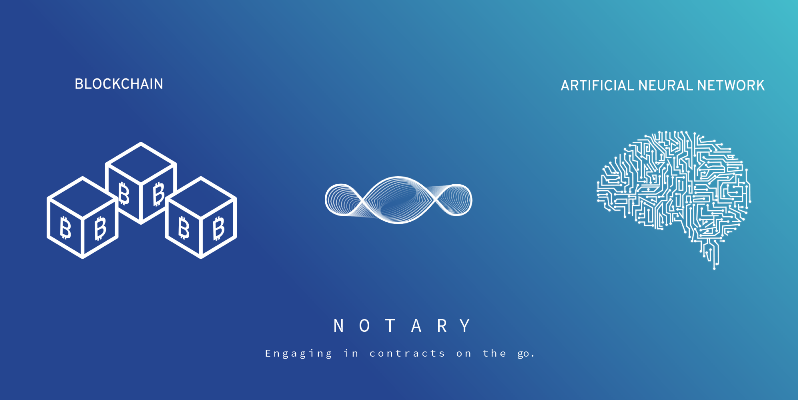
Artifical neural networks (as a set of artificial intelligence tools) can be used to solve very complex phenomena in everyday life. As they combine the universality of associative thinking with the precision of a mathematical model, they are able to capture the most complex trends in the phenomena under consideration. In mathematical terms, they are able to describe highly non-linear behavior of the modeled phenomena. Note that an average human thinking in everyday situations is, as a rule, linear as it originates from an instinctive response to relatively simple situations through the evolution of the human species (eg, a triggered response to a dangerous situation: defend yourself or run away).
Blockchain is already a huge phenomenon today. Its use seems to be limitless, but can blockchain really fulfill its promise? The answer is huge yes — there is already a number of use cases, which will evidently simplify number of processes and improve the whole sectors within different industries. But we at the Notary platform believe that the real break-through of blockchain will come from the combining the power of AI methods and blockchain technology.
Unfortunately, there is a significant difference between the blockchain and the artificial neural network (ANN) on the mathematical and the programmable level. Basically, blockchain by its nature is linear and is meant to store time series data or transactions (sequential processing).
On the other hand, artificial neural networks will likely need to be highly parallelized (parallel processing) in order to be more efficient. The problem of combining both approaches can be solved in different ways. There are two main approaches: the ANN can be used as a platform upgrade in a decentralized way for the added value of its service, or it can fully implemented in a decentralized way that corresponds to the ANN parallelism. Of course, there is also a third method which include combination of both approaches.
Apart of this, when dealing with all kinds of phenomena (be physical or social), we have to be aware that their nature is not deterministic, but non-deterministic (probabilistic). In layman terms this means that any prediction, given without an estimation of its reliability, is rather useless and misleading.
In the follow-up article(s), we will present general framework of how to apply ANN to its underlying blockchain technology. The concept is not yet fully tested but simulations show its potential and efficiency. Note that this technology will be implemented on the second and/or third stage of the Notary platform.
IoT seemed a good idea to the author of this article, but due to many problems never gained enough traction. However, blockchain technology (also DLT — distributed ledger technology) enables different approach which seems to fully comply with IoT. On top of that, inclusion of ANN and/or other AI techniques will bring the disruptive blockchain technology to the new level which will change the way of life we know today.
Why are we so confident about this? Below is the excerpt from an introduction to ANN software which was co-developed by author for commercial purposes many years ago. Basic principles were still the same and we expect that they will come to full fruition when we will combine it with DLT. Note, that names were intentionally changed.
In the beginning of 1992 Iggy, one of our team members, began with the use of the neural networks. He tried to solve some simple problems in the field of civil engineering and all results were very promising. After he had moved to some more sophisticated problems, he also encouraged some of us to try neural nets.
We ran our neural net programs with all possible combinations of neurons in many different layers. Several weeks were spent, without any results. We gave up; the problem remained unsolved and we lost our faith in the neural networks. (We must confess our knowledge about neural nets at that time was pretty poor.
Some expert would probably succeed in solving it.)
A few months later Iggy got an article from Prof. Grass, where some new ideas about neural networks were presented. He added some improvements, programmed his computer and tried out the new neural network on some simple problems. Everything worked fine. Finally, he also tried to solve our “unsolved problem” and he succeeded. Moreover, he solved it in one hour.
The story repeated itself a few months later. Iggy was visiting a university in Italy, where he met a team, who was also concerned with neural networks. They had a problem and after they had made several experiments with a number of hidden neurons, the final learning phase took about 30 hours. The results were good, but Iggy achieved better results within half an hour, although he had never heard of the problem before.
They did not trust his results (Just like we did not in example above.) The awareness that something can be done a couple of times faster than it was done before is always frustrating, especially if the new way is much simpler, too.
JOIN NOTARY ICO https://www.notary-platform.com/ico.html
Congratulations @pacek! You have completed some achievement on Steemit and have been rewarded with new badge(s) :
Click on any badge to view your own Board of Honor on SteemitBoard.
For more information about SteemitBoard, click here
If you no longer want to receive notifications, reply to this comment with the word
STOPDownvoting a post can decrease pending rewards and make it less visible. Common reasons:
Submit